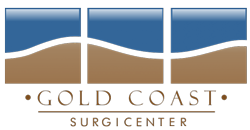Running Out Of Space?
For some, after a long day of work, lower back pain is inevitable. However, when pain does not go away, other forces may be at play. More and more Americans are complaining to doctors about lower back pain, and many cases are due to lumbar decompression. Any condition placing pressure on the lower spine can be classified as lumbar decompression. Most patients think lumbar decompression means surgery, but non-surgical treatment options are available.
What causes lumbar decompression?
The spine consists of a network of nerves branching out to different body parts. These nerves receive and relay pain signals to the brain. Around the spinal cord is a complex arrangement of bones, discs, facet joints, and ligaments. Should one of these components move out of place, the result is a compression or irritation of the nerves. Osteoarthritis is the most common cause of lumbar decompression. The bones and facet joints wear and tear or develop bone spurs, which can press on the nearby nerves. Other reasons include herniated discs, infections, spinal tumors, and osteoporosis.
Sign and symptoms
Lumbar decompression causes pain and discomfort in the lower back. Sometimes, the compression irritates the sciatic nerve, causing numbness and leg pain. Other symptoms include stiffness, weakness, and reduced function of the leg. Anyone facing these signs should see a doctor or back specialist immediately. The doctor will use both physical exams and imaging techniques to assess the back. Non-surgical treatment options will also be discussed.
Pain management and physical therapy
The first step is to manage the pain and strengthen the surrounding muscles. Pain medication and physical therapy are often used together at this stage. The doctor will recommend anti-inflammatory medicine and prescribe stronger pain medication. These should be taken as needed and will help with pain and discomfort. Physical therapy sessions will combine stretches, exercises, and even massage. These techniques relieve pressure on the spine while improving posture. Many people with lumbar decompression can manage symptoms with these options alone.
MBB and RFA
If the pain persists, treating the painful area can help. A medial branch block (MBB) directs anesthesia and sometimes steroids to the painful area. The doctor uses an x-ray technique called fluoroscopy to guide the needle to the medial nerves. An MBB can help both diagnose and provide extended relief. Radiofrequency ablation (RFA) is a similar procedure focused on burning off the nerve endings instead. Ablation provides much longer-term relief, often exceeding 1 year.
Is regenerative medicine the future?
What if there was a way to naturally heal the spine and improve conditions? Doctors have gained success in regenerative medicine. The body contains stem cells, platelets, and other growth factors responsible for helping with healing. By extracting these growth factors and injecting into the spine, less pain is possible. In some cases, regenerative medicine can heal bone and tissue. Standard methods include platelet-rich plasma (PRP) and mesenchymal stem cells (MSC) therapy.
Consider lifestyle changes
Different non-surgical treatment option works to varying degrees. Specific lifestyle changes can help accelerate the results. For instance, managing weight can take pressure off the spine, causing significant relief. Exercise, stretching, yoga, and massage lengthen and strengthen the back, reducing symptoms. Some doctors also recommend dietary changes, such as avoiding inflammatory foods.
Surgery is not the only option
A lumbar decompression diagnosis does not mean immediate surgery. In fact, many doctors turn to surgery as a last resort. These non-surgical options can keep patients mobile and pain-free.



